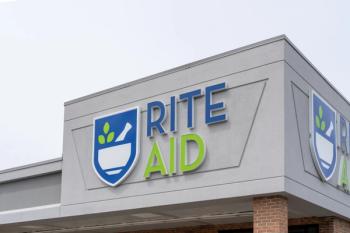
E-ordering of controlled substances more efficient than paper process
A new electronic version of the 222 ordering system is poised to help hospitals streamline the order prescribing process for Schedule II controlled substances.
A new electronic version of the 222 ordering system is poised to help hospitals streamline the order prescribing process for Schedule II controlled substances.
Lake Forest, Ill.-based PharMEDium, a provider of outsourced compounding services, rolled out its E-222 product at the American Society of Hospital Pharmacists (ASHP) summer meeting in June. Electronic ordering is expected to save hospitals time compared with traditional paper-based 222 forms, which the Drug Enforcement Administration requires for all Schedule II controlled substances.
While electronic ordering is nothing new, drug wholesalers have been ordering traditional pharmaceuticals via e-ordering for several years. PharMEDium claims to be the first company to launch an E-222 solution for Schedule II controlled substances.
E-prescribing also has an edge over paper-based 222 forms in another way. "With the paper form, if you made a single error anywhere on the paper, the whole thing got kicked out. You would have to submit the form again and start the process from the beginning. With E-ordering you could choose the wrong item from a menu, for example, but you are still going to get everything else that you ordered."
Malone told Drug Topics that the record keeping is also much better with e-ordering. "There are no carbon copies stapled to the invoice. It's all electronic. We keep electronic copies of the approvals on a server."
Malone said that he has been using electronic ordering for more than a year through McKesson, his wholesaler for non-controlled substances, and he believes that e-ordering will be required by the DEA at some point in the future. "It's efficient, inventory is better, you have better turnaround time on medications, and cleaner record keeping."
Sharon Davenport, CPhT, pharmacy technician supervisor at Centennial Medical Center, said prior to electronic ordering the pharmacy would run out of medications and it often took seven days for a 222 form to process. "One of the advantages of E-222 is that you know what you're getting and when you're getting it," Davenport said. At Centennial Medical Center a pharmacy technician does the ordering of Schedule II controlled substances and a pharmacist handles the DEA certification and verifies and approves the order.
Rich Kruzynski, president of PharMEDium, said that electronic ordering is more than just the elimination of paper and shorter processing time. He believes that the implications are broader and may impact patient safety. "You're dealing with very detailed descriptions on these narcotics and thousands of people with their printing and their abbreviations." He said that the potential for error is high and e-prescribing can help to eliminate errors compared with a handwritten form.
According to PharMEDium, the DEA processes around 5.5 million 222 forms annually. In recent years drug distributors have increased the number of electronic orders since the DEA launched its Controlled Substances Ordering System (CSOS) in 2005.
As of July 2007, DEA had processed more than 3 million electronic CSOS orders, with a typical transaction taking about 20 seconds, compared with a paper-based order that takes about 20 minutes. PharMEDium, citing DEA statistics, reported that the average E-222 form costs around $6 to process, compared with $39 for a paper-based form.
Hospitals must obtain a digital certificate from the DEA in order to take advantage of electronic ordering. It takes about one month for the DEA to approve the application for an E-ordering certificate.
THE AUTHOR is a health and medical writer based in New Jersey.
Newsletter
Pharmacy practice is always changing. Stay ahead of the curve with the Drug Topics newsletter and get the latest drug information, industry trends, and patient care tips.


















































































































